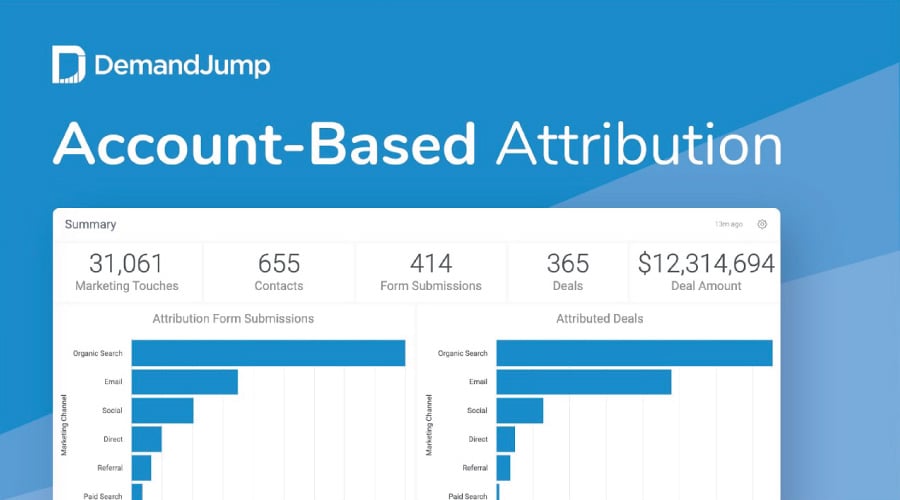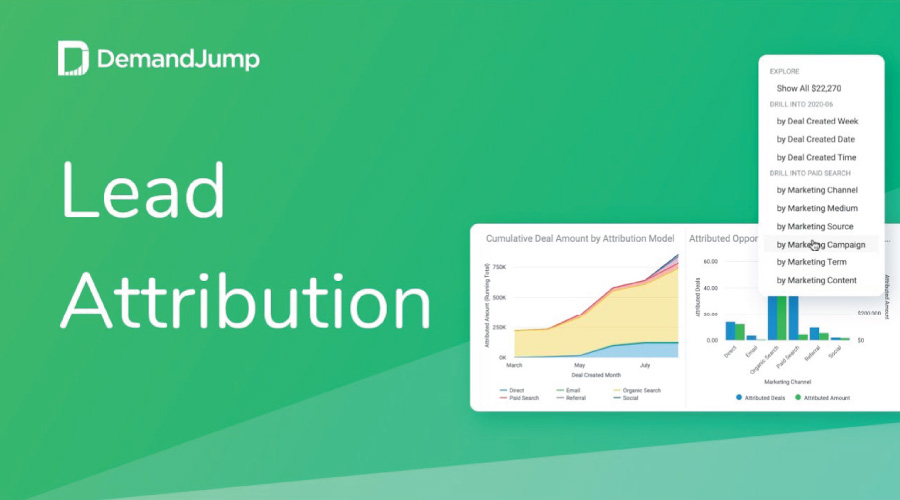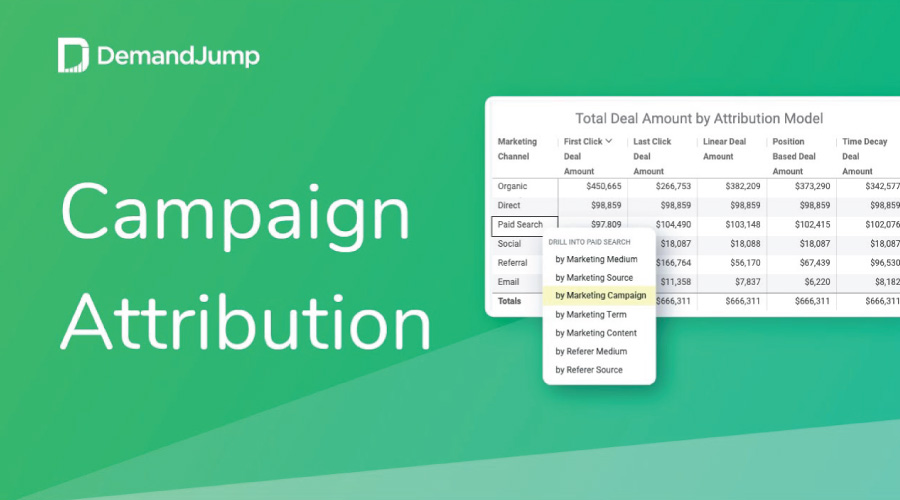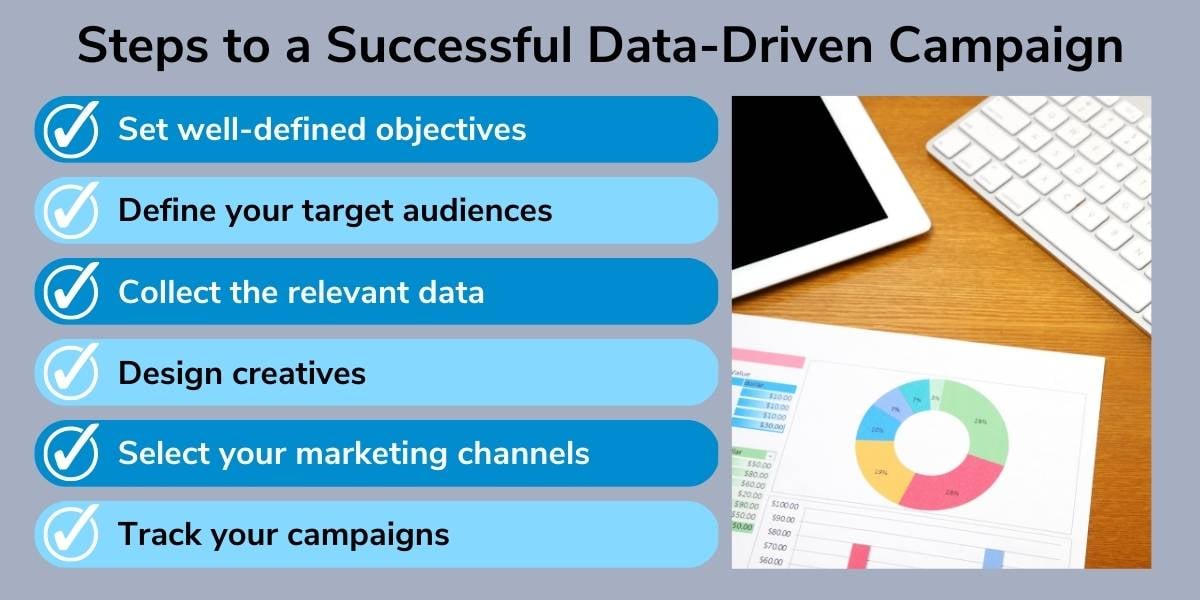Marketing Attribution
By embracing DemandJumps approach to SEO, we have been able to increase our organic rankings within just 2 weeks of implementing recommendations. This helped us see a 22% increase in organic search month-over-month.
Robert Jacko Vice President Digital Marketing @ Homage
DemandJump has become a crucial extension of our marketing team, providing game changing insights to fuel and propel all aspects of our digital marketing efforts. The DemandJump platform is a must have, we are seriously impressed.
Tim Lavinder Director of Ecommerce @ Hotsox
We used to spend hours looking for insights in dozens of tools and reports. Now we log into one place to find out what customers are doing and how to meet them where it matters most.
Zach Roop Digital Marketing Manager @ Dometic
We use DemandJump recommendations as our digital to-do list. We love going in and seeing the recommendations and knowing what to do next.
JoLynda Wilson Marketing Director @ IWC
Our Customers Love Attribution






Account-Based Attribution
Eliminate wasted time and spend. With DemandJump's automated account-based attribution
solution you will know with certainty which efforts are driving ROI.
Measure Your Marketing Performance
Find out which of your marketing efforts are making the biggest impact. See which channel drove consumers to you, the pages they visited, and all touchpoints along their path to purchase.
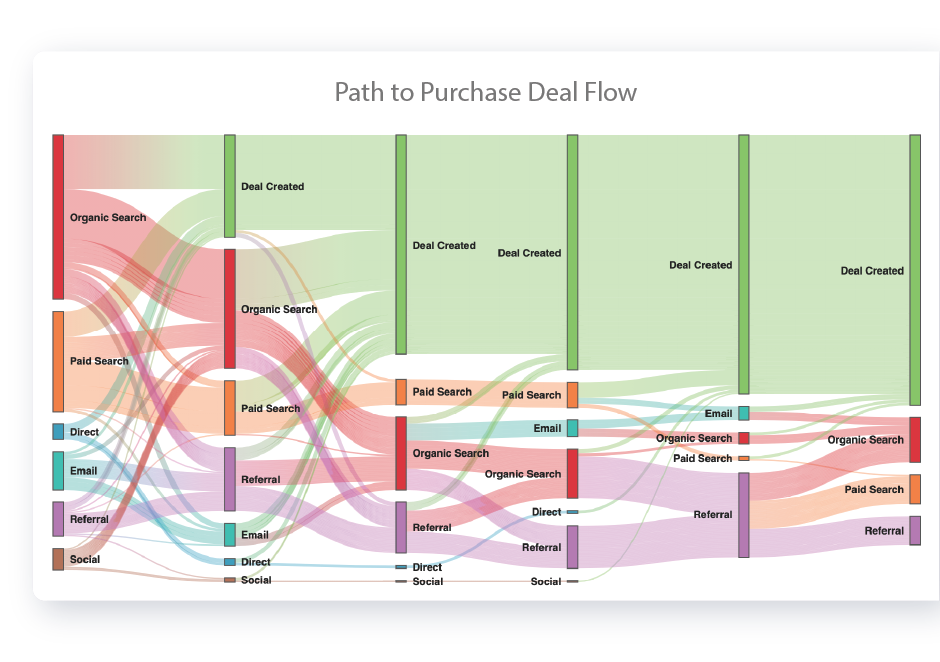
From Marketing Spend to Actual Pipeline Value
When a lead becomes a customer, you need to know which marketing channel or campaign should receive credit, and account-based attribution will give you the answers.
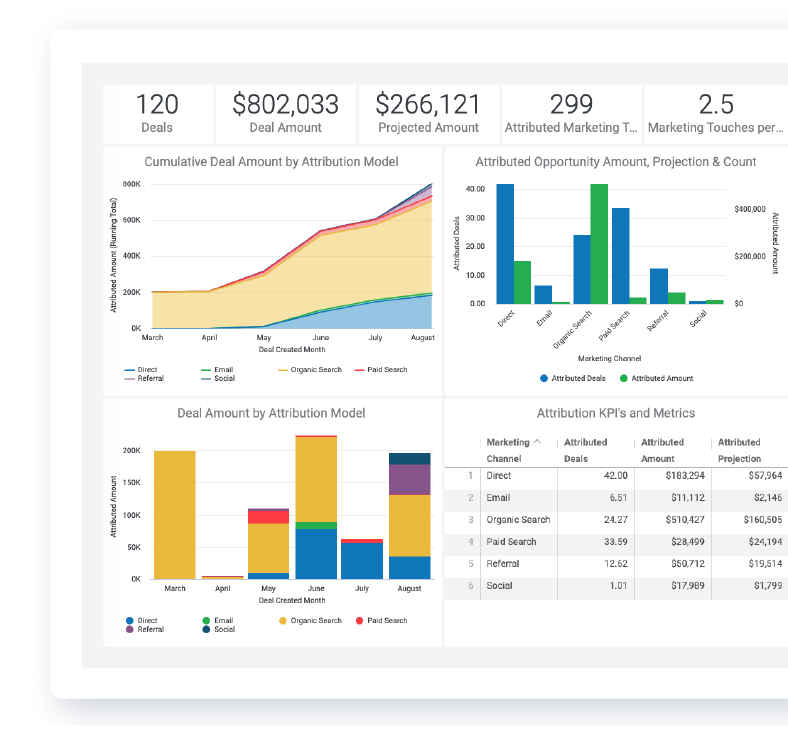
Organic & Paid Search Keyword Attribution
Beyond channel, campaign, and content attribution, you will finally see which organic and paid keywords are generating deal and opportunity revenue.
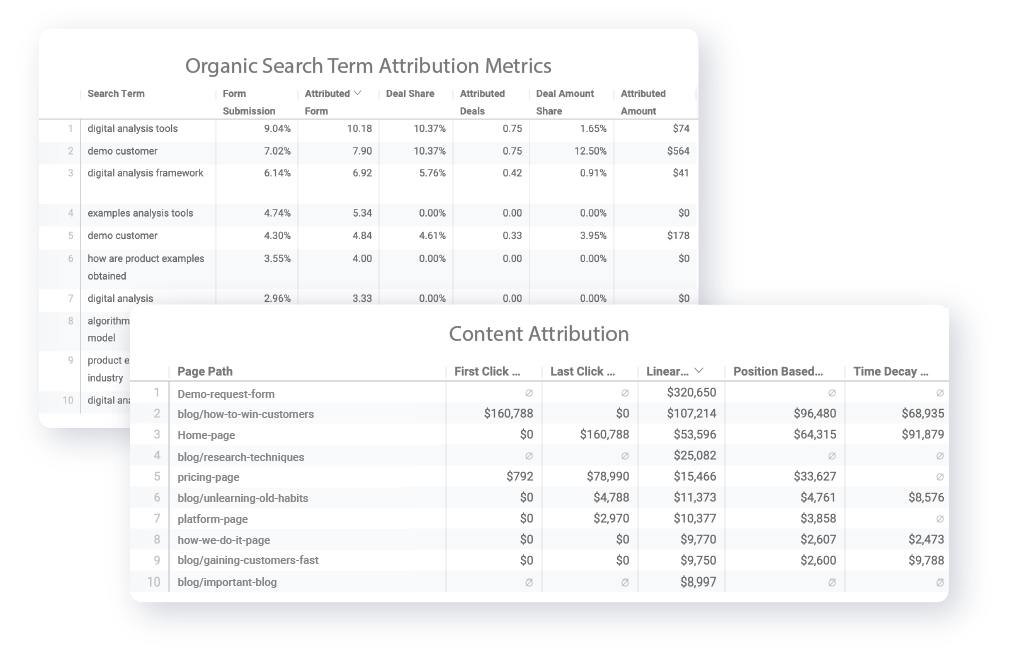
See a Demo of Attribution
Data-driven marketing is undoubtedly one of the hottest trends in the digital marketing industry thanks to the widespread accessibility of data and analytics tools. If you think about it, there was never a time when marketers weren’t data driven to some extent. Grocery stores would discontinue items with poor sales performance, and back-stock other items in high demand. Data-driven marketing has always been about observation and measurement, the difference today it’s more about insights. This is where data-driven marketing becomes exciting due to the wide range of data and analytics tools available to marketers today.
Data analytics tools help marketing professionals save time and money by providing them with forward-thinking insights in addition to looking at data from a historical perspective. With the right data, savvy marketers can uncover exactly who is engaging with their marketing efforts, identify what channels are working right down to the time of day their target audience is active in real-time. This allows marketers to drive data-driven marketing campaigns with a laser-like focus as opposed to a shotgun approach.
Consumer insights clearly show that the customer journey is constantly evolving as consumers use multiple devices and new channels making it harder for marketers to pinpoint where they are in their journey. Customers are more informed and connected than ever before, which immediately raises the stakes for marketers to face this challenge head-on. Marketing professionals need a roadmap to make better use of the data available to them to minimize the technical complexities that support data integration.
Today’s savvy customers make the assumption that marketers know and remember who they are, what they want and when they want it across all channels at all times. They don’t care if gathering this data is difficult. By not meeting their expectations they will take their business elsewhere. Whether competitors deliver a better customer experience doesn’t matter. Once you‘ve lost a customer, you need to fight so much harder to win their trust again.
What Does Data-driven Marketing Mean?
Data-driven marketing is a strategy used by marketing professionals to make more informed decisions when creating targeted marketing campaigns to optimize their marketing spend. It involves the collection and analysis of data to gather valuable insights into customer preferences, motivations and buying behavior. This data-driven approach has been one of the most transformational changes in digital advertising.
The goal of a data-driven approach is to optimize the marketing process by leveraging data to gain greater insights into consumer behavior. Marketing professionals leverage both internal and external factors as this approach considers a company's strengths and weaknesses informing them how they can best compete in the marketplace. Embracing data-driven marketing strategies means reaching the right consumers at the right time with a relevant and consistent message.
Once data is collected, marketers need to analyze three different stages of the market including the past, present and future.
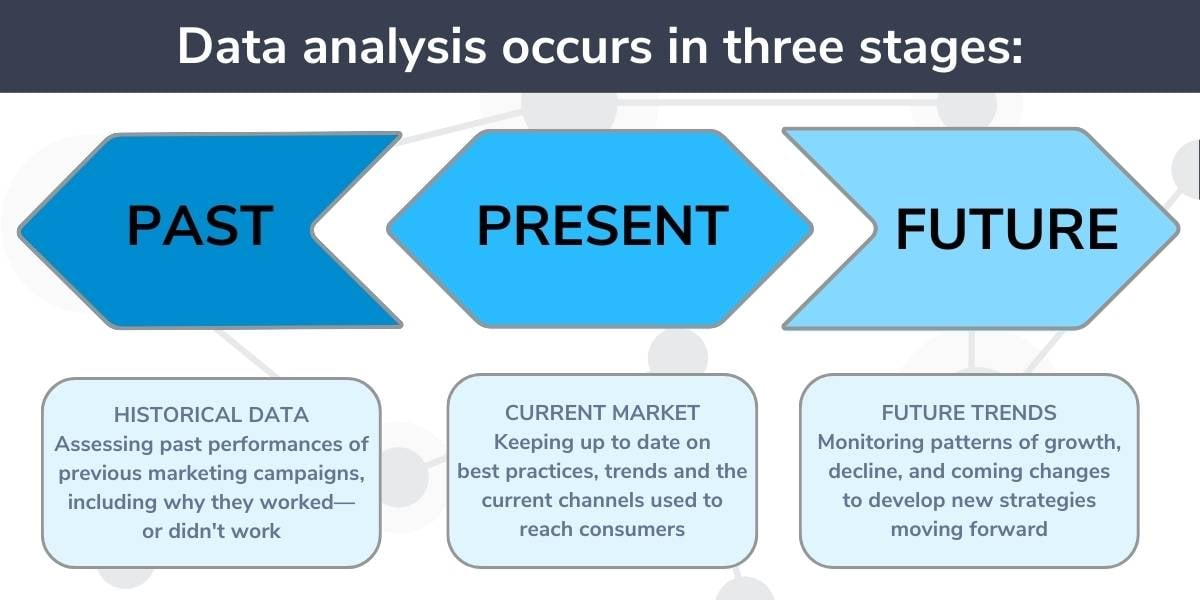 Historical data
Historical data
By analyzing past results, marketers gain insights into what campaigns performed better than others. The data answers questions like; who, what, where, and when - and advises which campaigns delivered the best ROI. Equally important for marketers is to understand what campaigns didn’t work using the same data to understand ‘why’ to avoid repeating the same errors again.
Current market
Understanding and analyzing the current market informs marketers what marketing strategies are currently working in their industry. This data-driven analysis provides them information about current trends and what creatives and marketing channels are best utilized to target their ideal customers.
Future trends
Data analysis provides an indication of future marketing trends and likely consumer behavior by looking at trends and growth in the current market before making assumptions for the future. This allows marketing departments to create relevant marketing plans for the future. Customer loyalty and return on investment are factors to be considered in the present climate to ensure marketers get better results in the future.
Data-Driven Analysis
It’s easy for marketers to feel overwhelmed by the sheer amount of data available which can lead to paralysis by analysis. They are expected to become data experts overnight which puts them under enormous pressure to make sense of the data and have it pay off. Recognizing the importance of data-driven marketing means companies need to invest in the necessary tools, technology, and talent to help marketers understand the complexities of creating effective data-driven marketing campaigns.
Data analysis is defined as the process of inspecting, cleansing, transforming and modeling data to uncover useful information to aid the decision-making activities in business. Data analysis tools and techniques make it easier for users to interpret the data, analyze the relationship and correlations between data sets and identify patterns and trends for interpretation.
Digital Marketing Analytics encompasses a broad spectrum of marketing activities not to be confused with web analytics. Web-analytics are a subset of digital marketing analytics focused on SEO, site speed and other components of the performance of a website to be optimized for engagement and conversion.
 There is a range of data analysis tools and techniques available to marketing professionals that provide them with insights into a data-driven marketing campaign. The following tools and techniques are the most common analytics tools used in the marketing industry.
There is a range of data analysis tools and techniques available to marketing professionals that provide them with insights into a data-driven marketing campaign. The following tools and techniques are the most common analytics tools used in the marketing industry.
- Text Analysis
- Statistical Analysis
- Descriptive Analysis
- Diagnostic Analysis
- Predictive Analysis
- Prescriptive Analysis
Text analysis
Text analysis is also referred to as text mining. Data mining uses computer science and sophisticated mathematical algorithms to extract information from a data set. By using software to look for patterns in large batches of data, marketers can learn more about their customers to develop more effective marketing strategies.
Statistical analysis
Marketing professionals can learn more about their customers to develop effective marketing strategies by using software to look for patterns in large batches of data. Statistical analysis includes the collection, analysis, interpretation, presentation, and modeling of data. The statistical analysis highlights what happened in the past by using statistical data in the form of dashboards and data visualization.
Descriptive analysis
The descriptive analysis uses data aggregation and data mining to provide marketers with insight into the past and answer the question: “What has happened?” Descriptive analytics is a way of linking the market to gain the information needed to make quality decisions. Market researchers use descriptive or quantitative market research to answer specific questions like averages and percentages to summarize and report data.
Diagnostic analysis
In contrast to descriptive analysis, diagnostic analytics is less focused on what occurred and more on why something happened. Diagnostic analytics looks at the processes and causes instead of the result.
Predictive analysis
Predictive analysis is the use of statistics and modeling techniques to give the marketer tools to determine future performance. Analytics uses statistical models and forecasting techniques to understand “What could happen in the future?” Email responses, opens, website visits, engagement, webinar attendance, event participation are some of the attributes that carry predictive value.
Prescriptive analysis
Prescriptive analysis advises on possible outcomes by using a combination of techniques and tools such as business rules, algorithms, machine learning, and computational modeling procedures. These techniques are applied against inputs from a variety of different data sets including historical and transactional data, real-time data feeds along with big data. A prescriptive analysis uses optimization and simulation algorithms to advise marketers on possible outcomes and answer the question: “What should we do in the future?”
Prescriptive analysis is helping marketing attribution become more accurate as well. By applying algorithms and more advanced data-science to attribution models, marketers can now see the true cause of conversions and better understand what to do next.
Competitive landscape analysis
A competitive landscape is an analysis of how your business compares with similar businesses in a competitive environment. It’s a fancy name for competitor research. A competitive landscape analysis typically includes an analysis of your marketing strengths and weaknesses compared to your competitors. This might include sales figures, brand recognition, or even more tactical components of marketing such as website traffic sources and analysis of your competitors advertisements. It helps marketing professionals delineate how their strategies differ from their competitors, and how to learn from them.
Competitive landscape analysis breakdown
Firstly, marketers need to create a competitor content analysis by searching for top results in their identified categories. Google is a great place to start and for more powerful analytics, they can use a tool like DemandJump to uncover more details into a competitor’s website traffic.
Marketers can uncover more information about their competitors by signing up for their blog and mailing list to check out how their competitors interact with their customers and determine what keywords they use to rank in organic internet searches. By monitoring a competitor’s social media presence on Facebook, Twitter, Instagram, and LinkedIn, it allows marketers to compare the results with their own. This gives marketing professionals an insight into the demographics of their competitors’ followers, what hashtags they are using and what their engagement is like to make comparisons compared to their own.
This type of market research can take a long time if performed manually. By using a tool like SocialPilot it makes it easier to track competition across multiple social media channels saving time leaving marketing departments to concentrate on the more strategic aspects of their business.
Once a marketing campaign has finished, comparing and analyzing the ROI is integral to future campaigns. This is the point where marketers make the shift from researching a competitive landscape and gain high-level insights post-campaign to analyze the results. Tracking tactics in real-time provides those who work in marketing departments with the insight they need to make more informed marketing decisions that positively impact future campaigns.
Once marketers understand who their competitors are, what their unique selling proposition is, and who their ideal customers are, this gives them a platform to drive future campaigns based on data rather than guesswork. Data-driven campaigns translate into a better return on investment by using the right marketing channels to target the right customers with the right message all using data-driven marketing insights.
Why does data matter and where does it come from?
Collecting the data
According to Forbes, data is big business in developing effective marketing strategies. The burning question for those new to data-driven marketing is to know where the data comes from?
Customer data can pop up from just about anywhere from marketing automation, website logs, customer support inquiries, ERP and other enterprise systems. Any business function such as accounting, procurement, project management, sales, manufacturing and/or distribution operations capture data in-house. Coupled with online surveys, consumer feedback, social media, data is everywhere.
Companies use customer relationship management systems (CRM) to capture a wealth of data about the sales and service-related information of their customers. CRM is a business strategy using software to capture the entire history of any interaction a customer has with their company. Using the data to better understand buying behavior, CRM systems help marketers use this data to plan effective marketing campaigns targeted at existing customers to retain their business and win new clients.
CRM systems allow companies to better manage the sheer volume of data to better understand consumer behaviors. It organizes marketing efforts, manages the sales pipeline, calculates time spent on closing sales and more. CRM systems can create reports to learn which products and services sell best and when. These systems have the capability to capture leads in real-time, understand where they come from and manage the sales pipeline. This data arms the marketer with the capability to create marketing campaigns to reach the consumer at the precise point of their customer journey with timely and relevant messaging.
Using data to create a marketing campaign obviously begins with gathering the data you need to design an effective strategy.
Although data comes from many sources, not all data contributes equally to understanding consumer behavior. With inaccurate information, salespeople can waste time dealing with unqualified prospects. Customer service people can waste time correcting flawed customer orders collected from salespeople. Decision-makers leave jobs and take valuable intellectual property with them if the transition is not handled properly.
Marketers have the unenviable task of separating the good data from the bad data. Bad data has several origins, one being flawed data entry (“garbage in garbage out”). It may not be malicious, it could be a simple typo or numbers entered in the wrong order. Sometimes data is simply out of date which has a flow effect. Developing a unified customer experience is impossible without unified customer data. When data is not shared across business functions, data remains in silos dampening the marketing department’s effort to drive new business.
Learning about the many internal and external data sources available adds value to marketers. It’s not enough to rely solely on CRM systems to capture data, marketers need to take data from multiple sources to create unified profiles to provide a 360-degree view of each customer to drive better segmentation and optimize their audience creation.
Using data from external providers allows marketers to better target prospects and manage customer purchasing lifecycle. For instance, Avention, formerly known as OneSource offers business-to-business data about customers and prospects. The business aggregates company, industry, and financial information from a variety of sources, including news articles, websites, and regulatory filings. Marketers access this information through Avention's software or data can be integrated into a customer's CRM enterprise information system. Marketers can then blend external data with internal data and feed it into an analytics engine to provide more extensive marketing insights.
As marketing automation matures, it’s no surprise that companies who adopt CRM systems and similar technologies are sitting on a wealth of data. Capturing and storing data-rich information on current customers and future prospects leverages the power of predictive analytics to provide greater insights into buyer intent. With this type of information, marketing departments and sales professionals can focus the majority of their efforts on the highest-value leads.
The data-driven marketing industry has seen a steep climb in technologies to support marketers. Gathering all this data can be very time consuming and knowing where to source external data depends on whether it’s a small business or a large enterprise. For instance, large enterprises think nothing of spending six figures on ‘big data’ tools to gather and manage information critical to their business. What about small businesses who don’t have six-figure budgets to spend on data. Fortunately, there are five data analysis tools small businesses can use to get big results without breaking the bank.
Google analytics
Google provides great free easy to use tools for small business marketers to gain insights into their marketing campaigns. The Google Analytics Application Gallery connects third-party developers to Google Analytics delivering easy to read reports and help manage marketing spend. These tools give marketers powerful insights into what works and what doesn’t without spending hours analyzing data freeing up more time to develop effective marketing strategies.
There are useful data apps on Hub'Scan, LogMyCalls and GA Data Grabber designed for use with Excel. This allows marketers to manage their marketing spend and produce easy-to-read reports from Google Analytics. You can browse the Google Application Gallery for free and can purchase apps for varying fees. Hub'scan runs $750 for 250,000 analyzed pages, LogMycalls is free to start, with paid services running at $29 per month and GA Data Grabber has a $299 annual fee, per module.
Data-driven marketing campaigns
A data-driven marketing strategy means developing a different mindset compared to the marketing strategies used two decades ago. It requires marketing professionals to understand customers’ requirements and use the data management tools available today to leverage more effective marketing campaigns.
Because customers connect across multiple platforms, marketers need to use data more than ever to focus on targeted campaigns that reflect where the customer is in their buying journey. Using data-driven marketing strategies, marketers can stay one step ahead by being audience-centric, reaching customers with messages that matter to them using the channels they prefer. This means mastering digital marketing strategies using data and analysis to influence their decisions.
Data-driven marketing campaigns optimize performance by gaining critical insights into consumer behavior. Collecting relevant data pinpoints where they live, what age they are, what their spending power is, where they hang out online and what their needs and wants are. Although data-driven marketing strategies improve audience targeting by conducting market research and collecting data about buyer behavior, it’s easy to get distracted with so much data and lose focus on the primary objective of a campaign.
Before launching into a data-driven campaign, first ask the question, “What do I want to achieve with all this data?”
Answering this question requires marketers to collect data on every aspect of a consumer’s engagement ranging from demographics to market-wide metrics and individual interactions. The data is then analyzed to determine success markers used to help decide where, when and how to allocate marketing resources. Using this data-driven approach, marketers develop the types of creatives that will resonate with the consumer and deliver the best ROI.
Creating a data-driven campaign
Set well-defined objectives
Setting well-defined goals and objectives as early as possible before collecting and analyzing data, will guide the entire campaign process. Goals and objectives might include increasing brand awareness, driving more website traffic, boosting sales, increasing market share or even improving the customer experience. Goals should be specific, measurable, achievable, relevant and have a time frame attached.
Define your target audience
No business can afford to target everyone in a campaign. It’s critical to narrow down the audience to target the group of people most likely to respond to your marketing initiatives. This means collecting relevant data to provide the following insights:
Demographics
Depending on your marketing goals, collecting data on the demographics of your target audience might include parameters such as age, gender, marital status, where they live, education level, where they work, income level and more. Search for data that gives you as much detail you need relevant to your campaign. Your research might also include collecting psychographic data like consumer interests, values, and opinions.
Behaviors
The behaviors that will most interest you depend on the goals and objectives of your marketing campaign. If your goal is to boost sales, you might look at what your customers have purchased from you previously and analyze the types of advertising and online content they responded to in previous campaigns. You might also look at their behaviors online and how they interact with social media.
Motivations
When you understand your target audiences’ motivations, you can tailor creatives and media placement that resonates with them.
Collect the relevant data
Start with collecting data about past customers to include sales history, customer service communications, completed customer surveys and feedback and how they currently interact with your website and social media platforms. If you can’t find the relevant data in-house, you might need to buy third-party data. Once you’ve gathered and analyzed all the data, this will give you the insights you need to create a targeted campaign.
Design creatives
Now that you have identified your marketing goals, understand who your ideal customers are, what their buying behavior is, you can then design creatives with a strong call to action that links back to your goals. In designing the creative, consider what do you want them to do? Go to your website, click on a digital advertisement, sign up to a newsletter or blog, email or call for more information.
Select your marketing channels
It’s important to be specific about what marketing channels you want to run your campaign on. Evaluate the pros and cons to evaluate the strengths and weaknesses of each channel. Be as specific as possible. Rather than choose a vague description like social media, specify exactly which social media platform you will use, for example, Facebook.
Track your campaigns
Ideally, you want to track your campaigns in real-time as it progresses. Leveraging your marketing team to monitor your campaign and continuing to collect data throughout the campaign means you can leverage this data to quickly change tack if needed. Use the performance metrics identified in step four to figure out what’s working and what isn’t. Armed with these insights you can refine your target audience and marketing messages to achieve your objective more quickly.
Marketing Data Case Studies
Case studies are invaluable to establish proof that the products and services you offer meets the needs of your target customers and delivers value. A marketing case study is a research method involving an in-depth detailed examination of a marketing campaign over a period of time. Nowadays, most people look at online product reviews and posts on social media before making a purchasing decision. Case studies are invaluable to establish proof that the products and services marketers offer do in fact meet the needs of their target audience and deliver value.
Incorporating a webpage to house case studies makes it easy for visitors to find and provides social proof of how good your products and services are. It doesn’t need to be called case studies, it can be called Examples of Our Work, Customer Success Stories or something else again. Customer quotes and testimonials can live anywhere on a webpage including the home page.
Case studies can be used in email marketing and even incorporated into newsletters and blog articles. Customers are more likely to watch a video than read a lengthy case study. Case studies can be incorporated into email signatures, used in social media posts - the possibilities are endless.
DirectTv is an example of a data-driven business transformation case study.
DirectTV
Marketing professionals can increase their conversion rates when they launch a data-driven marketing campaign. For instance, DirectTV used demographic data such as age, gender, job, and location to reveal their customers’ needs and interests. They then launched a personalized campaign on the home page of their website specifically targeting people who recently bought or moved to a new home. By using data in the research phase, they discovered 80% of homeowners will try new products and services when they move to a new home. Of these, 60% will try a new service provider.
By personalizing their message by targeting people moving into a new home, Direct TV delivered a more focused marketing message that delivered a greater ROI than other strategies.
Data-driven marketing trends 2020
In 2020, we can see the huge impact digital marketing has had over the last decade. Marketing continues to evolve making it imperative marketing professionals adapt and evolve alongside new marketing trends to stay competitive and retain high-quality customers.
The top digital marketing trends for 2020 isn’t just about what’s right in growing a business, it’s focused on what’s right for the customer.
Consumer Privacy
Data privacy protection concerns are driving new regulations globally.
Repeated privacy breaches by Facebook and Google leading to the release of customer details have highlighted to consumers their data isn’t safe. As regulators act to protect data privacy online and improve personal data protection, the organizations that go beyond complying with all the new requirements will undoubtedly build trust with consumers giving them a distinct competitive advantage.
The European Union (EU)’s General Data Protection Regulation (GDPR) has been in force for the past 12 months. The GDPR was created to protect the privacy of individuals within the European Union. Similar regulations such as the California Consumer Privacy Act (CCPA) were passed by the California State legislature and signed into law on June 28th, 2018. Focusing on the rights of California residents, this legislation protects data privacy. It helps the consumer understand what data is collected and how it is sold or disclosed. Any organization interacting with Californians needs to comply with the CCPA.
These regulations mean digital marketers need to look more holistically at how they address privacy in the future. What this signifies for data-driven marketing organizations is the need to protect data to comply with data privacy regulations.
Privacy regulations will continue to evolve, both in the U.S. and abroad. With the right tools in place, marketers need to work with colleagues across their organization to implement a consolidated approach to help organize and automate their data and privacy controls to continue to build trust and accountability with their consumers.
Personalized marketing automation
What’s good for customers is good for business. By complying with privacy regulations and using data that is ethically collected, it’s possible for marketers to set up highly personalized marketing automation campaigns into the future.
Personalization is more than dynamically inserting a customer’s name, it’s about serving them the right message at the right time. Personalization has become a priority for marketers as it delivers a better customer experience. According to a survey conducted by Accenture, 91% of consumers are more likely to shop with brands that recognize, remember and provide relevant personalized offers and recommendations.
As automation becomes increasingly important in the digital space, consumers still want to relate to a company. Generic newsletters to a huge list of people will become a thing of the past. Personalized groupings of newsletters personalized to a customer’s history and data will outperform generic emails.
Google and Facebook will continue to dominate paid advertising on-line
According to eMarketer in its March 2019 report, Facebook and Google will continue to dominate paid media investments online in 2020. Currently, Facebook and Google own 58.4% of the paid advertising market in the US. This doesn’t include the marketing spend attributed to maintaining a Facebook page.
Data-driven marketing
According to the Altimeter/Prophet State of Digital Marketing Report, the most desired skills for digital marketing hires in 2019 and 2020 is to improve their data-driven marketing skills to gain the benefits reported by McKinsey research that suggested that: “Intensive users of customer analytics are 23 times more likely to clearly outperform their competitors in terms of new customer acquisition than non-intensive users, and nine times more likely to surpass them in customer loyalty.”
The Unknown
The future of data-driven marketing campaigns will become increasingly more important with the onset and spread of the coronavirus in March 2020. As businesses rebound once the COVID-19 pandemic is under control, marketers will need to rethink how this will affect future marketing tactics.
The world of digital marketing as we know will never be the same as consumers get used to a new reality during this pandemic. The coronavirus has impacted consumer mobility with online sales spiking and offline sales sagging. There’s a shift in media consumption habits, supply chains are under pressure as shortages of goods manufactured in China. This means marketers must pay attention to how the pandemic is changing the landscape of consumer behavior and plan marketing tactics accordingly.
Here are some of the shifts marketing professionals need to take into account when planning future marketing campaigns.
- Shifting budgets to promote at-home delivery options for groceries, restaurants, liquor along with alternate fitness solutions and equipment.
- Reducing marketing budgets on campaigns that drive short-term sales and invest more in keeping brands alive.
- Directing investments in marketing tactics to drive online sales.
- Shifting the focus on promoting premium products to entry-level everyday products.
- With sporting events being canceled or played without fans, redirecting or holding their allocated marketing dollars for later investment.
- Various media channels are experiencing demand-driven price fluctuations requiring marketers to manage digital spending areas according to supply and demand.
- Tracking data in local demographics experiencing varying levels of the impact caused by the Coronavirus.
Marketers must also become aware of what marketing messages are appropriate during the pandemic and how best to leverage data and analytics to understand and meet the needs of consumers. Through scenario planning, marketers need to weigh the short and long term implications to better meet their customers' needs now and in the future given a range of possible outcomes.
Remove the uncertainty from your digital marketing by focusing on the metrics that matter -- and on the metrics that matter to your competitors! With access to the data-driven DemandJump platform, you can be confident that you're making the best decisions for your business, helping to maximize your marketing and advertising spend in a way that will drive new revenue for your business. If you and your marketing team are struggling to make sense of the dozens of metrics that are coming at you from every direction, you need a way to harness the power of your digital platforms to create a data-driven approach for your strategies. Start your free trial of DemandJump today and start seeing the benefits of consumer insight analysis, research top advertisers and keywords and more.
Marketing Attribution Resources
Marketing AttributionAttribution Tracking
B2B Marketing Attribution
Hubspot Attribution
Marketing Campaign Influence
Mobile Attribution
Multi Touch Attribution
Offline Attribution
Sales Forecasting
Sales Opportunity Attribution
The Future of Data-Driven Marketing
Opportunities of Internet Marketing
Other Resources
Channel Optimization
Consumer Behavior
Consumer Insights
Consumer Insights and Analytics
Competitor Analysis Tools
Content Marketing
Content Strategy
Cross-Channel Analytics
Customer Insight Research Techniques
Customer Journey Map
Market Intelligence
Marketing Analytics Techniques
Market Research
Marketing Attribution
Opportunities of Internet Marketing
Types of Consumer Insights



